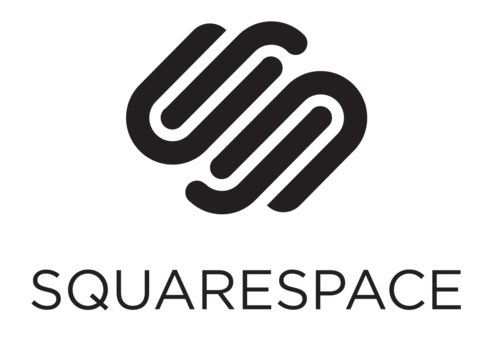Been scrolling reviews instead of actually building your site?
Same here until I cracked the code on choosing one platform.
Let me save you the endless tabs.
I’ll reveal what makes a website creation platform truly beginner proof.
Expect side by side comparisons, real screenshots, and time saving hacks.
In a few minutes, you’ll know exactly which button to click to go live.


Website platforms do the heavy lifting for you. Think of them as your personal web development team that never sleeps.
When I built my first site manually years ago, I spent days just figuring out how to make a contact form work. With today’s platforms, you drag and drop a contact form, and it’s ready in seconds.
Here’s what these platforms handle automatically:
Server management and hosting
Security updates and patches
Mobile responsive design
Basic SEO structure
SSL certificates
Database management
The time savings alone make platforms worth it. Instead of learning HTML, CSS, and PHP, you can spend that time creating great content and growing your business.
Most platforms also come with built-in tools for analytics, email marketing, and e-commerce. You get everything in one package instead of piecing together different services.
Not all website builders are created equal. Here’s what to look for:
Ease of Use: The interface should feel natural. If you’re confused after 10 minutes, move on to another option.
Template Quality: Good templates save hours of design work. Look for modern, clean designs that match your industry.
Customization Freedom: You should be able to change colors, fonts, and layouts without hitting walls.
Mobile Optimization: Your site needs to look great on phones. This isn’t optional anymore.
SEO Tools: Basic SEO features like meta tags, alt text, and clean URLs should be included.
Loading Speed: Slow websites lose visitors. The platform should create fast-loading sites by default.
Support Options: When you’re stuck at 11 PM trying to launch, good support makes all the difference.
WordPress.com works great for blogs and simple business sites. The learning curve is gentle, and you get access to thousands of themes. However, customization can be limited on free plans.
Wix offers incredible design flexibility with its drag-and-drop editor. You can place elements anywhere on the page. The downside? Sites can sometimes load slower than other platforms.
Squarespace creates beautiful, professional sites right out of the box. Their templates are stunning, but they’re less flexible than other options. Perfect if you want something that looks designed by a pro.
Shopify dominates for online stores. If you’re selling products, this platform handles everything from inventory to payments seamlessly. Not ideal for non-commerce sites though.
Webflow gives you designer-level control without coding. It’s more complex but offers professional results. Best for those with some design experience.
My personal favorite for beginners? Wix hits the sweet spot of ease and flexibility for most small business needs.
Your domain name is your website’s address. Getting this sorted early prevents last-minute scrambles.
Keep domain names short and memorable. Avoid hyphens, numbers, or confusing spellings. If possible, get the .com version – it’s what people expect.
Most website platforms let you buy domains directly through them. This keeps everything in one place and often includes free email addresses.
Domain registration usually takes a few minutes, but DNS changes can take up to 24 hours to fully activate. That’s why buying early matters for your one-day launch timeline.
Before touching any design tools, write down what you want your website to accomplish. This keeps you focused and prevents scope creep.
Common website goals include:
Generate leads for your business
Sell products online
Build brand awareness
Share expertise through blogging
Showcase a portfolio
Each goal affects your design choices. A lead generation site needs strong contact forms and clear value propositions. An online store requires product galleries and shopping carts.
Write down your top three goals and refer back to them when making design decisions.
Content creation takes the longest time, so prepare everything beforehand. Having your content ready lets you focus on design and layout during build day.
Create a simple document with:
Your business description (2-3 paragraphs)
List of services or products
Team member bios
Customer testimonials
Contact information
High-quality photos
For photos, either use professional shots or high-resolution smartphone photos. Avoid blurry, pixelated, or dark images. Stock photos work too, but original photos feel more authentic.
Write in a conversational tone that matches how you’d talk to customers in person. Skip the corporate jargon that makes people’s eyes glaze over.
Templates are your best friend for a one-day launch. Starting from scratch takes days or weeks. Good templates get you 80% of the way there in minutes.
Browse your platform’s template library and look for designs in your industry. Restaurant templates understand the importance of mouth-watering food photos. Law firm templates emphasize trust and credibility.
Don’t get stuck in analysis paralysis. Pick a template that feels close to your vision and move forward. You can always switch later.
Look for templates with the page layouts you need. If you need an online store, make sure the template includes product pages and shopping cart functionality.
Your website should reflect your brand personality. Colors and fonts play a huge role in this.
If you already have brand colors from business cards or logos, use those. If not, pick 2-3 colors that feel right for your business. Blue conveys trust, green suggests growth, red creates urgency.
Keep fonts simple and readable. Fancy script fonts might look pretty, but they’re hard to read on mobile devices. Stick with clean, modern fonts for body text.
Most platforms offer pre-made color schemes that work well together. These take the guesswork out of color matching.
Every website needs certain essential pages. Create these first:
Home Page: Your front door. It should immediately tell visitors what you do and why they should care.
About Page: Share your story and build trust. People want to know who’s behind the business.
Services/Products: Clearly explain what you offer and how it benefits customers.
Contact: Make it easy for people to reach you. Include phone, email, and physical address if relevant.
For a one-day launch, focus on these core pages. You can add specialized pages like testimonials or case studies later.
Your home page has about 8 seconds to grab attention. Make them count.
Start with a clear headline that explains what you do. “We bake fresh bread daily” is better than “Welcome to our bakery.” Be specific and benefit-focused.
Follow with 2-3 sentences explaining how you help customers. Skip the company history – save that for the About page.
Include a strong call-to-action button. “Get Started,” “Shop Now,” or “Contact Us” work better than vague phrases like “Learn More.”
Add social proof early. Customer logos, testimonials, or impressive numbers build instant credibility.
The About page builds trust and connection. Share your story in a way that resonates with customers.
Don’t just list your qualifications. Explain why you started the business and what drives you. People connect with purpose more than credentials.
Include a professional photo of yourself or your team. Faces make your business feel more human and trustworthy.
Keep the focus on how your background helps customers. Your 20 years of experience matters because it means better service for them.
This page converts visitors into customers. Organization and clarity are key.
For services, group related offerings together. A web design company might have categories like “Website Design,” “SEO Services,” and “Maintenance Plans.”
For products, use high-quality photos and clear descriptions. Include key details like size, color options, and pricing.
Write benefit-focused descriptions. Instead of “Our widgets are made with premium materials,” try “Our widgets last 50% longer than competitors.”
Add customer reviews or testimonials next to each service or product. Social proof increases conversion rates significantly.
A blog helps with SEO and positions you as an expert. You don’t need dozens of posts for launch – start with 3-5 quality articles.
Write about topics your customers care about. A fitness trainer might blog about “5 Exercises You Can Do at Home” or “How to Stay Motivated When Working Out Alone.”
Keep posts between 800-1500 words. This length provides value without overwhelming readers.
Use subheadings to break up text. People scan online content, so make it easy to digest.
Make contacting you as easy as possible. Include multiple options – phone, email, contact form, and physical address if you have a location.
Add your business hours clearly. Nothing frustrates customers more than calling during what they think are business hours and getting voicemail.
If you serve specific areas, mention them. “Serving downtown Chicago and surrounding suburbs” helps with local SEO.
Consider adding a simple contact form. Some people prefer forms over email, especially for initial inquiries.
Search engine optimization helps people find your website. Start with these fundamentals:
Add page titles and descriptions for every page. These show up in search results, so make them compelling.
Use your main keywords naturally in your content. If you’re a dog groomer, include phrases like “dog grooming,” “pet grooming,” and your location.
Add alt text to all images. This helps search engines understand your photos and improves accessibility.
Create a simple sitemap. Most platforms generate this automatically, but double-check that it exists.
Website speed affects both user experience and search rankings. Test your site’s loading time before launch.
Compress large images. High-resolution photos can slow down your site significantly. Most platforms do this automatically, but verify your images aren’t causing problems.
Limit the number of plugins or widgets. Each add-on can slow down your site.
Choose a template that loads quickly. Some complex designs sacrifice speed for fancy animations.
Over half of web traffic comes from mobile devices. Your site must work perfectly on phones and tablets.
Test your site on actual mobile devices, not just your computer’s mobile preview. Real devices often reveal issues that previews miss.
Check that buttons are easy to tap with fingers. Small clickable areas frustrate mobile users.
Ensure text is readable without zooming. If people have to pinch and zoom to read your content, they’ll leave.
HTTPS encrypts data between your website and visitors. It’s essential for trust and SEO.
Most modern platforms include SSL certificates automatically. Look for the lock icon in your browser’s address bar to confirm it’s working.
If you’re on an older platform that doesn’t include HTTPS, upgrade or switch platforms. This isn’t optional anymore.

Here’s a realistic timeline for your launch day:
Hours 1-2: Platform Setup
Create your account
Connect your domain
Choose your template
Set up basic settings
Hours 3-4: Design Customization
Upload your logo
Set brand colors and fonts
Customize header and footer
Set up navigation menu
Hours 5-6: Content Addition
Add home page content
Create About page
Upload service/product info
Add contact information
Hours 7-8: Polish and Test
Add images and optimize
Test all links and forms
Check mobile responsiveness
Review for typos
Hours 9-10: Launch Prep
Set up analytics
Configure SEO settings
Run final tests
Go live!
Before hitting publish, check these items:
All links work correctly
Contact forms submit properly
Images load and look good
Text is error-free
Mobile version works
Analytics tracking is active
Social media links are correct
Loading speed is acceptable
Create this checklist a day before and work through it systematically.
The actual launch is anticlimactic after all your preparation. Most platforms make going live as simple as clicking “Publish.”
Once live, visit your site from different devices and browsers. Chrome, Safari, Firefox, and Edge can all display sites slightly differently.
Send the link to a few friends or family members for fresh eyes feedback. They might catch issues you missed.
Share your new website on social media and with your email list. Your launch day is a great excuse to reconnect with your audience.
Google needs to know your website exists. Submit your site to Google Search Console for faster indexing.
Create a free Search Console account and add your website. Upload your sitemap to help Google understand your site structure.
Most new sites appear in search results within a few days, but it can take weeks to rank well for competitive keywords.
Website analytics show you how visitors find and use your site. This data helps you improve over time.
Google Analytics is free and provides detailed insights. Install the tracking code on every page of your site.
Focus on basic metrics initially: number of visitors, most popular pages, and where traffic comes from. Advanced analytics can wait until you have more data.
Websites can break or get hacked. Regular backups protect your hard work.
Many platforms automatically backup your site. Check what’s included with your plan and how often backups happen.
For extra protection, manually download copies of your content periodically. Store these files somewhere safe like Google Drive or Dropbox.
Websites aren’t “set it and forget it” projects. Plan regular updates to keep content fresh and secure.
Update your platform whenever new versions are released. These updates often include security improvements and new features.
Add new blog posts regularly if you’re using content marketing. Even monthly posts help with SEO and visitor engagement.
Review and update your content quarterly. Remove outdated information and add new services or products.
Cheap hosting might save money upfront but costs visitors and sales. Slow websites frustrate users and hurt search rankings.
If your chosen platform feels sluggish during the build process, consider upgrading to a higher-tier plan before launch.
Test your site speed from different locations. What loads quickly for you might be slow for visitors in other countries.
More isn’t always better. New website owners often cram too much onto each page.
White space is your friend. It makes content easier to read and gives your site a professional appearance.
Limit your color palette. Using too many colors creates visual chaos and confuses visitors.
Stick to 1-2 fonts maximum. Font mixing rarely works well and makes sites look amateur.
Every page should guide visitors toward a specific action. Weak or missing calls-to-action waste potential customers.
Make buttons stand out with contrasting colors. Visitors should immediately see what you want them to do next.
Use action-oriented language. “Get Your Free Quote” works better than “Learn More.”
Place calls-to-action in multiple locations, especially above the fold where visitors see them immediately.
Testing feels boring after hours of building, but skipped testing creates embarrassing problems.
Test your contact forms by actually submitting them. I’ve seen sites with broken forms that owners never realized weren’t working.
Check your site on different screen sizes. What looks perfect on your laptop might be unreadable on phones.
Have someone unfamiliar with your business try to complete common tasks on your site. Their struggles reveal usability issues you might miss.
Free website plans exist, but they come with significant limitations that can hurt your professional image.
Free plans typically include:
Platform branding on your site
Limited storage space
Restricted customization options
No custom domain
Basic support only
Paid plans remove these restrictions and add professional features like custom domains, email addresses, and better support.
For business websites, paid plans are worth the investment. The professional appearance and functionality improvements pay for themselves quickly.
Watch out for costs that aren’t obvious upfront:
Domain Renewal: Domains cost $10-15 annually after the first year, even if you got the first year free.
Email Hosting: Professional email addresses often cost extra, typically $5-10 per month per address.
Premium Templates: Some platforms charge extra for their best designs, ranging from $50-200.
App Integration: Third-party tools for bookings, e-commerce, or marketing may require separate subscriptions.
Traffic Overages: High-traffic sites might trigger additional hosting fees on some platforms.
Read the fine print and budget for these ongoing costs.
Q: Can I really build a professional website in one day?
A: Yes, but it requires preparation and realistic expectations. You’ll have a functional, good-looking site, but refinements and improvements will continue after launch.
Q: What if I’m not tech-savvy?
A: Modern website builders are designed for beginners. If you can use social media or email, you can build a website. Most platforms offer tutorials and support.
Q: How much should I budget for my first year?
A: Expect $200-500 for a basic business website including domain, hosting, and a paid platform plan. E-commerce sites typically cost more.
Q: Should I hire a professional instead?
A: For simple business websites, DIY platforms work great. Consider professionals for complex functionality, custom design requirements, or if you prefer to focus on your business.
Q: What happens if I outgrow my chosen platform?
A: Most platforms allow you to export your content and move to other solutions. However, switching platforms requires rebuilding your design, so choose carefully initially.
Q: How long before my site appears in Google search results?
A: New sites typically appear within days but may take weeks or months to rank well for competitive keywords. Consistent content creation and SEO efforts improve rankings over time.
Building a website in one day is absolutely possible with the right approach and tools. Focus on getting a solid foundation live, then improve and expand over time. Your perfect website is one that exists and serves your customers – not one that stays in development forever.